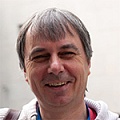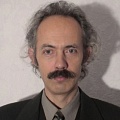As of 01.11.2022
9
Number of staff members
255
scientific publications
15
Objects of intellectual property
Name of the project: Discrete and computational geometry
Research directions: 3D modeling, real-time digital processing of images, prototyping, discrete and computational geometry
Project objective: Solving current applied mathematical problems
Akopyan A.V., Karasev R.N.
Kadets-Type Theorems for Partitions of a Convex Body. Discrete and Computational Geometry 48(3): 766–776 (2012).
Dolbilin N.P., Edelsbrunner H., Glazyrin A., Musin O.R.
Functionals on Triangulations of Delaunay Sets. Moscow Mathematical Journal 14(3): 491–504 (2014).
куваев р.о., кашин с.в., капранов в.а., эдельсбруннер г., мячин м.л., дунаева о.а., русаков а.и.
Новые компьютерные технологии эндоскопической диагностики в гастроэнтерологии и онкологии // Доказательная гастроэнтерология. 2013. Том 1. № 2. С. 3–12.
алексеев в.в., богаевская в.г., преображенская м.м., ухалов а.ю., эдельсбруннер х., якимова о.п.
Алгоритм картографической генерализации, сохраняющий топологию // Фундаментальная и прикладная математика. 2013. Т. 18. № 2. С. 5–12; Journal of Mathematical Sciences 203(6): 754–760 (2014).
д. с. глызин, с. д. глызин, а. ю. колесов
“Охота на химер в полносвязных сетях нелинейных осцилляторов”, Известия вузов. ПНД, 30:2 (2022), 152–175
с. д. глызин, а. ю. колесов
“Критерий гиперболичности эндоморфизмов тора”, Матем. заметки, 111:1 (2022), 134–139; Math. Notes, 111:1 (2022), 147–151
с. д. глызин, а. ю. колесов
“Элементы гиперболической теории на бесконечномерном торе”, УМН, 77:3(465) (2022), 3–72
с. д. глызин, а. ю. колесов
“Критерий гиперболичности одного класса диффеоморфизмов на бесконечномерном торе”, Матем. сб., 213:2 (2022), 50–95; S. D. Glyzin, A. Yu. Kolesov, “A hyperbolicity criterion for a class of diffeomorphisms of an infinite-dimensional torus”, Sb. Math., 213:2 (2022), 173–215
с. д. глызин, а. ю. колесов
“Периодические режимы двухкластерной синхронизации в полносвязных сетях нелинейных осцилляторов”, ТМФ, 212:2 (2022), 213–233; Theoret. and Math. Phys., 212:2 (2022), 1073–1091
с. д. глызин, а. ю. колесов
“Бегущие волны в полносвязных сетях нелинейных осцилляторов”, Ж. вычисл. матем. и матем. физ., 62:1 (2022), 71–89; Comput. Math. Math. Phys., 62:1 (2022), 66–83
с. д. глызин, а. ю. колесов, н. х. розов
“Об одной математической модели репрессилятора”, Алгебра и анализ, 33:5 (2021), 80–124
с. д. глызин, а. ю. колесов
“О некоторых модификациях отображения “кот Арнольда””, Докл. РАН. Матем., информ., проц. упр., 500 (2021), 26–30; Dokl. Math., 104:2 (2021), 242–246
с. д. глызин, а. ю. колесов, н. х. розов
“Об одном классе диффеоморфизмов Аносова на бесконечномерном торе”, Изв. РАН. Сер. матем., 85:2 (2021), 3–59; Izv. Math., 85:2 (2021), 177–227
с. д. глызин, а. ю. колесов, н. х. розов
“О существовании и устойчивости бесконечномерного инвариантного тора”, Матем. заметки, 109:4 (2021), 508–528; Math. Notes, 109:4 (2021), 534–550
|
Hosting organization
|
Field of studies
|
City
|
Invited researcher
|
Time span of the project
|
|---|---|---|---|---|
|
Analysis, probability, quantum theory, integrable systems, machine learning and their applications
Saint Petersburg State University - (SPbU) |
Maths |
St. Petersburg |
Hedenmalm Haakan Per
Sweden |
2024-2028 |
|
Laboratory «Nonlinear and nonlocal equations and their applications»
Peoples' Friendship University of Russia - (RUDN University) |
Maths |
Moscow |
Kuksin Sergei Borisovich
Russia, France |
2022-2024 |
|
Probabilistic Methods in Analysis
Saint Petersburg State University - (SPbU) |
Maths |
St. Petersburg |
Hedenmalm Haakan Per
Sweden |
2021-2023 |





